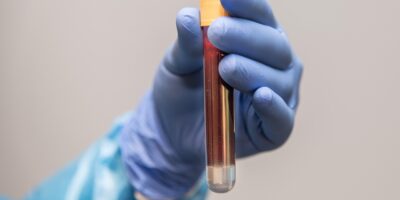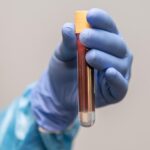Breast cancer (BC) is one of the most common cancers that affect millions of women around the world. Recent studies have identified molecular mechanisms involved in tumour progression, disclosing the relationship of a circular RNA molecule, circGSK3β, in promoting cell proliferation, migration, and immune evasion in breast cancer. New therapeutic approaches could deepen the understanding of new molecular targets, thus providing better diagnostics for breast cancer treatment.
CircRNA is not just a regular RNA. Unlike other linear RNAs, its structure forms a loop that makes it super stable. Circular RNA affects the gene expression of a protein PRMT5 (arginine methyltransferase), known for its role in transcription regulation. Here, it acts like a sponge that swallows microRNA, miR-338-3p, which usually helps to suppress tumour growth. When circRNA activates, microRNA cannot do its job, allowing breast cancer cells to grow and spread more easily.
Here’s where it gets really fascinating! This whole process circles around a complex chain involving circGSK3β, miR-338-3p, and a protein PRMT5. CircGSK3β helps breast cancer cells hide from the body’s immune system. PRMT5 modifies specific genes, including the one that tells cells to produce other proteins like PD-L1. By promoting the expression of PD-L1, immune cells fail to detect cancerous cells, thus tricking the immune system into thinking the cancer cells are harmless and letting them grow. This immune escape mechanism demonstrates the potential of targeting a specific circular RNA to strengthen the efficiency of future therapies.
To elucidate the influence of circRNA expression on breast cancer development, several tests were performed on two different types of breast cancer cells. The results showed that the more circRNA is expressed, the bigger the invasiveness into the immune cells. Meanwhile, the invasive capability of BC cells is inhibited with a reduced expression of the CircGSK3β (Fig.1.A, B). This supports the concept that by inhibiting the specific circRNA, we can suppress breast cancer progression.
Figure 1. A, B. The analysis of two different BC cells (MDA-MB-231 and MCF7) treated with overexpressed circGSK3β, Si-NC (non-coding RNA) and si-CircGSK3β (a specific RNA that inhibits the CircGSK3β expression) [1].
So why is it important? The study discovers the significance of circGSK3β in breast cancer progression. Knowing its mechanisms could potentially uncover new pathways for treatment. If we target circGSK3β or other molecules it regulates, advanced therapies could be developed to make it harder for breast cancer cells to hide from the immune system. It is too early to state this, as there are still some limitations, like specimen availability. However, this research could hopefully change the way we think about fighting breast cancer and offer promising diagnostics for cancer patients.
Featured picture from Google Images: https://images.app.goo.gl/BTbwpLvmA9Akd6Nz7
- Journal Article: Liang, L., Gao, M., Li, W. et al. CircGSK3β mediates PD-L1 transcription through miR-338-3p/PRMT5/H3K4me3 to promote breast cancer cell immune evasion and tumor progression. Cell Death Discov. 10, 426 (2024). https://doi.org/10.1038/s41420-024-02197-8








